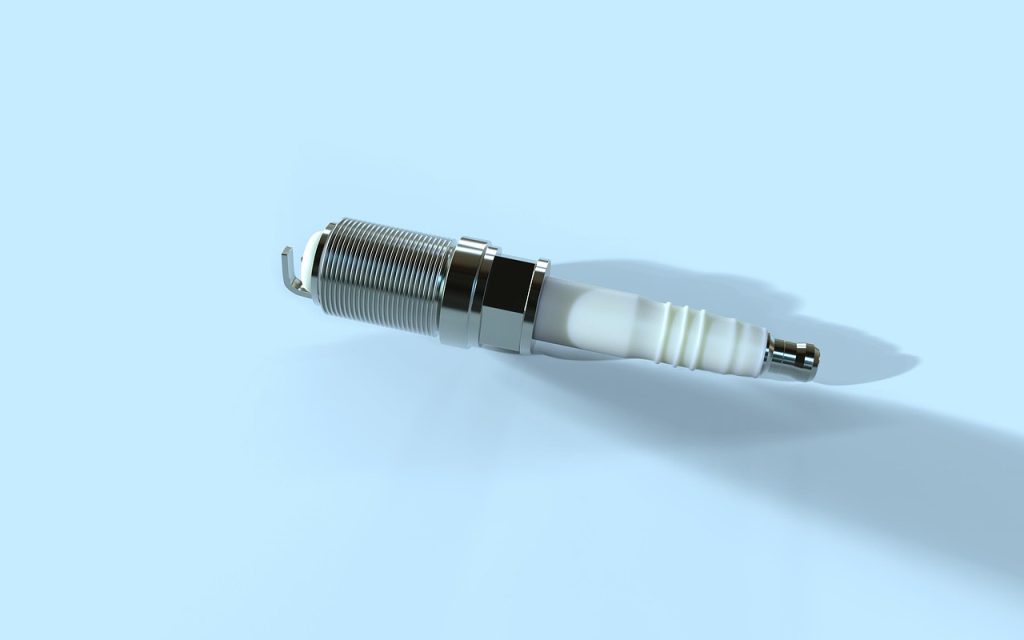Internal combustion engines are the powerhouses that drive our cars. They consist of a large number of components, all working together in harmony to transform fuel into motion. One of the components of a combustion engine is the spark plug. These play a crucial role in the proper functioning of the engine by generating the spark that ignites the air-fuel mixture within the engine’s cylinders. It’s a seemingly simple task, but one that’s crucial for your vehicle’s performance.
At the same time, spark plugs can encounter various issues that limit the proper functioning of the car. One of these is the dreaded spark plug seizure. When this occurs, the once-smooth operation of your engine stumbles, sputters, or even comes to a halt.
In this guide, we will take a closer look into the intricacies of spark plugs and their often mystifying tendency to seize.
Understanding Spark Plugs
Before we dive into the causes of spark plug seizure, let’s briefly discuss the fundamental role that these small yet vital components play within your vehicle’s engine.
At their core, spark plugs are conductors of electrical energy. They’re threaded into the cylinder head of an internal combustion engine and have two primary functions: igniting the air-fuel mixture and transferring heat away from the combustion chamber. This role is crucial for the smooth and efficient operation of your engine.
Spark plugs may seem like small and unimportant parts, but they have a significant influence on your engine’s performance. When they’re in good condition, your engine runs smoothly, achieving optimal fuel combustion and power output. Neglecting spark plug maintenance, however, can lead to a range of issues, including poor fuel efficiency and even engine misfires.
Detecting issues with spark plugs isn’t always easy. Thankfully, there are some common warning signs to watch for. If your engine experiences rough idling, hesitation during acceleration, or a decrease in fuel mileage, it may be an indication to investigate your spark plugs. Additionally, if your vehicle’s Check Engine light illuminates, it could be due to spark plug-related problems.
Causes of Spark Plug Seizure
Now that we’ve established the importance of spark plugs, it’s time to take a closer look at their occasional tendency to seize up. The term “seizure” might evoke images of mechanical failure, but it’s a multifaceted issue with several underlying causes.
Carbon Deposits
With every combustion cycle, tiny particles from the air-fuel mixture can stick to the spark plug’s electrodes. Over time, these particles accumulate and form carbon deposits. These deposits act like insulators and ultimately make it harder for the spark plug to do its job effectively.
Carbon buildup interferes with the spark plug’s ability to generate a strong, consistent spark. When the spark weakens, the engine struggles to ignite the air-fuel mixture. This results in rough idling, reduced power, and, in severe cases, misfires or engine stalling.
Regular maintenance can prevent carbon deposits from building up. Using high-quality fuel and additives designed to clean the combustion chamber can help keep your spark plugs clean and functional.
Overheating
Spark plugs operate in an environment where temperatures can become extremely high. When your engine runs hot due to factors like improper cooling or running too lean, the spark plug becomes exposed to extreme heat. This excessive heat can damage the plug’s components.
Overheating can cause the spark plug’s insulator to crack or melt. This can ultimately compromise its ability to contain the spark and maintain a proper gap. As a result, it can lead to misfires or even a complete loss of spark.
Maintaining your engine’s cooling system is important to prevent spark plug overheating. Regularly check and replace coolant as needed, and ensure that your radiator and cooling fans are functioning correctly.
Rust and Corrosion
Even though spark plugs are located in the engine, they are not impervious to moisture. Over time, exposure to humidity and moisture can lead to rust and corrosion on the spark plug’s metal components.
Rust and corrosion can affect the plug’s ability to conduct electricity and transfer heat, thereby reducing its efficiency. This can result in misfires and engine performance issues.
You can minimize exposure to moisture by ensuring your engine is sealed properly. Also, using dielectric grease on the spark plug boot can help prevent moisture intrusion.
Diagnosing Spark Plug Seizure
Being able to identify the symptoms of spark plug seizure is important to address the issue promptly and prevent further engine damage. Let’s take a look at how you can identify this problem and know when it’s time to take action.
Here are some common symptoms that could indicate a problem:
- Rough Idling: If your engine suddenly starts to shudder or vibrate when idling, it’s a telltale sign that something is amiss with your spark plugs.
- Reduced Power: A decrease in power output can occur due to incomplete combustion caused by seized spark plugs.
- Engine Misfires: Frequent misfires, which feel like hiccups in engine performance, can be attributed to spark plug issues.
- Check Engine Light: When your vehicle’s onboard computer detects spark plug-related problems, it may illuminate the Check Engine light on your dashboard.
How to Perform a Visual Inspection
A visual inspection can give you clues about the condition of your spark plugs. Here’s how to do it:
- Safety First: Ensure your engine is cool before attempting any inspection.
- Locate the Spark Plugs: Consult your vehicle’s manual to locate the spark plugs, which are typically found near the engine’s cylinder head.
- Inspect the Spark Plugs: Carefully remove one spark plug at a time using a spark plug socket wrench. Examine each plug for signs of damage or abnormal deposits.
Normal Appearance: A healthy spark plug should have a tan or light gray electrode with no excessive carbon buildup, oil deposits, or corrosion.
Abnormalities: Look for wetness, excessive carbon deposits, melted insulators, or signs of rust or corrosion
Consider using diagnostic tools such as an OBD-II scanner for a more precise assessment. This device can read fault codes stored in your vehicle’s computer and provide specific information about spark plug-related issues. This tool can pinpoint problems before they become noticeable through symptoms.
Preventive Maintenance
The action of preventing spark plug seizure is a proactive approach that can save you time, money, and all the trouble associated with engine problems. Let’s take a closer look at the key preventive measures to ensure your spark plugs stay in good condition and your engine works as it should.
Regular Inspection and Replacement Schedule
One of the easiest yet most effective ways to avoid spark plug issues is to follow regular inspection and replacement schedule. Here’s a recommended timeline:
- Regular Inspection: Ideally, check your spark plugs every 30,000 miles (or as specified in your vehicle’s manual) for any signs of wear, deposits, or damage.
- Replacement: Typically, spark plugs should be replaced every 40,000 to 100,000 miles, depending on the type of plugs used. Refer to your vehicle’s manual for specific recommendations.
Properly Torquing Spark Plugs
When installing or replacing spark plugs, you want to use a torque wrench to ensure they are tightened to the manufacturer’s specifications. Over-tightening can damage the threads in the cylinder head, while under-tightening can lead to poor contact and eventual seizure.
Using Anti-Seize Compound
To prevent spark plugs from seizing within the cylinder head, it’s good to apply a small amount of anti-seize compound to the threads before installation. This compound helps to prevent corrosion and makes future removal easier, reducing the risk of damaging the threads.
Choosing the Right Spark Plug for Your Engine
Not all spark plugs are created equal and selecting the appropriate spark plugs for your engine is more important than you might think. Make sure to read your vehicle’s manual or seek advice from a mechanic to ensure you’re using the right type and heat range of spark plugs. Different engines have specific requirements and using the wrong ones can lead to poor performance and potential seizure.
Fixing Seized Spark Plugs
Experiencing seized spark plugs can be very annoying. The good news is that there are steps you can take to address the issue.
Removing Seized Spark Plugs:
- Safety First: Ensure the engine is completely cool before starting any work.
- Gather Tools: You’ll need a socket wrench, spark plug socket, a breaker bar, penetrating oil, and a rubber mallet.
- Spray Penetrating Oil: Liberally apply penetrating oil around the base of the seized spark plug. Allow it to sit for at least 15 minutes to loosen the threads.
- Attempt to Loosen: Using the spark plug socket and a breaker bar, gently attempt to loosen the spark plug. Apply steady, controlled force to avoid damaging the threads.
- Apply Heat (if necessary): If the spark plug remains stubborn, carefully heat the area around the plug with a propane torch. Heat can help expand the metal and further loosen the seized plug.
- Try a Rubber Mallet: After heating, tap the spark plug socket gently with a rubber mallet to help break any remaining corrosion or rust.
- Gradual Removal: Continue to apply torque with the breaker bar in a counterclockwise direction. Be patient and persistent, as forcing the issue can lead to more significant problems.
- Clean the Threads: Once the spark plug is removed, clean the threads in the cylinder head with a thread chaser or a spark plug thread tap.
Cleaning and Repairing Damaged Spark Plugs
- Assess the Damage: Examine the seized spark plug for any visible damage. If the insulator or electrode is damaged, it’s best to replace the plug.
- Clean the Plug: If the spark plug appears salvageable, use a wire brush to clean off any deposits or corrosion. Ensure the plug is completely dry before reinstallation.
- Anti-Seize Compound: Apply a small amount of anti-seize compound to the threads of the spark plug to prevent future seizing.
Reinstalling Spark Plugs Correctly
- Hand-Tighten: Carefully thread the spark plug into the cylinder head by hand to prevent cross-threading.
- Torque to Spec: Use a torque wrench to tighten the spark plug to the manufacturer’s specifications. Over-tightening can lead to damage, while under-tightening can cause poor contact.

